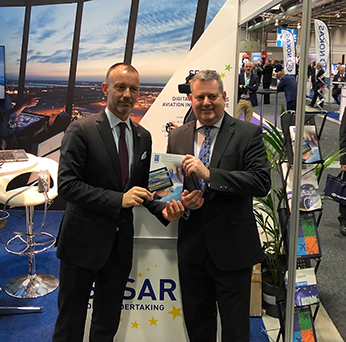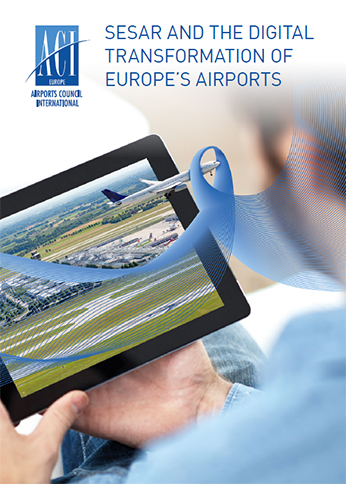The SESAR Joint Undertaking in collaboration with ACI Europe took the opportunity to co-host a workshop on the safe and secure integration of drones into the airspace, in the sidelines of the ACI Exchange in Oslo (27-29 November). SESAR and its role in supporting the digital transformation of airports was also a focus of the main conference, where a new ACI publication on the topic was launched.

A total of 70 stakeholders from the drone, airport and broader aviation community attended a dedicated ACI-SESAR JU workshop on the challenges and opportunities presented by drones. The rapid growth of the drone market presents many challenges for Europe’s airports. Drone intrusions at airports regularly hit the headlines and airports are taking measures in the short term to mitigate these, from grounding aircraft when drones are detected to reducing speed of aircraft on approach in order to limit damage in the event of a collision.
Drones can therefore have significant impact on the punctuality and the overall capacity of the airport. In the long-term, dealing with drones requires airports to look at systems that will help them to detect, survey, identify drones or enforce trajectories as well as enable the geo-fencing of the airspace around the airport. At the same time, these air vehicles could represent future new revenue streams by allowing larger drones transporting freight and maybe eventually passengers to land. This does mean having to rethink surface operations. They can also improve the efficiency of airport operations through the deployment, for example, of small drones asset inspection.
The workshop was an opportunity to present several U-space projects recently launched by the SESAR JU addressing everything from the concept of operations for drone operations, critical communications, surveillance and tracking, and information management to aircraft systems, ground-based technologies, cyber-resilience and geo-fencing.

Download workshop presentations (Zip file)
SESAR and its role in supporting the digital transformation of airports was also a focus of the main conference. In his opening address, Olivier Jankovec, Director General of ACI EUROPE, stressed how
ATM disruptions and inefficiencies affect airport operations all the way into terminal buildings. He pointed to technology and digitalisation as drivers for efficiency and for the integration of airport operations into the value chain. He reiterated ACI EUROPE’s continued support for SESAR innovation and implementation.
In this respect and on the occasion of the conference, ACI EUROPE published SESAR and the Digital Transformation of Europe’s Airports. In showcasing the SESAR solutions available to airports, this publication aims at further engaging the airport community in proven technological solutions for more efficient and sustainable airport operations.
“SESAR is both the test-bed and gateway to the widest collection of proven technological solutions for airport operations in Europe. As such, it has come to play an important role in advancing the business of airports and their competitive edge - alongside the delivery of the Single European Sky technological pillar of ATM modernisation,” said Mr Jankovec.
Participants were given further insights into SESAR’s work on airports through two session interventions by Peter Hotham, SESAR JU Deputy Executive Director, addressing ATM delays in the context of airports and digital transformation from a passenger perspective. A dedicated SESAR JU stand allow participants to discover SESAR innovation through a digital/VR experience.

